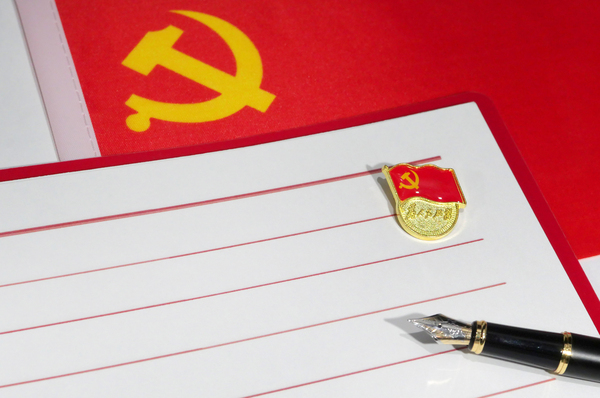The troubles in the US banking industry continue (global hot topic) Institutions | Ratings | US
The financial report released by Pacific Western Bank of the United States recently showed a significant decrease in its deposits, once again sparking market concerns. The picture is taken at a Pacific Western bank branch in Huntington Beach, California, USA. Xinhua News Agency/Reuters
Recently, multiple international rating agencies have downgraded the credit ratings and outlook of several US banks. Experts say that under the background of high interest rates, the risk of asset liability management in the US banking industry is intensifying. As the Federal Reserve's monetary policy remains tight, the US banking crisis may continue to ferment.
The banking industry lights up a "red light"
Recently, international rating agency S&P announced a downgrade of the credit ratings of five small and medium-sized banks in the United States, and lowered the outlook for the other two banks from "stable" to "negative".
According to Reuters, among the five banks that have been downgraded, United Bank of America and Silicon Valley National Bank have "high financing risks and high dependence on brokerage deposits", while United CITIC Bank and UMB Financial Company have experienced "deposit loss", and Kekai International Group has been pointed out by S&P as having "limited profitability".
Just recently, another international rating agency, Moody's, downgraded the credit ratings of 10 small and medium-sized banks in the United States and placed 6 large US banks on the downgrade watch list. Additionally, 11 banks had a negative outlook. Moody's warned that the outlook for the US banking industry is deteriorating.
In addition, international rating agency Fitch has recently released a judgment stating that it may downgrade the ratings of dozens of US banks.
Affected by the rating downgrade, US bank stocks fell. On the day after the news of S&P's downgrade was released, the stock prices of American banks such as Citigroup, Bank of America, Wells Fargo, and JPMorgan Chase fell nearly 2%.
More "red light signals" are still appearing. The Federal Reserve report shows that over 700 banks in the United States are facing significant security and solvency risks due to significant floating losses on their balance sheets, with losses exceeding 50% of their capital.
At the end of July, the regional bank Heartland Tri State Bank, located in Kansas, USA, declared bankruptcy due to insolvency and was taken over by the Federal Deposit Insurance Corporation. This is the fifth bank bankruptcy case in the United States this year.
In March of this year, Silicon Valley Bank, Signature Bank, and First Republic Bank exploded one after another, causing a shock in the US banking industry. With the recent downgrade of ratings from multiple banks, the market is concerned that the troubles in the US banking industry are far from over.
Continuous interest rate hikes are the driving force

Multiple international rating agencies have stated in their reports that the US banking industry is facing multiple pressures, including deposit loss and rising financing costs. The tightening of monetary policy is the key reason for this situation.
Since March last year, the Federal Reserve has raised interest rates 11 times in response to inflation, with a cumulative increase of 525 basis points. After the monetary policy meeting on July 26th, the federal funds rate has reached 5.25% to 5.5%. The analysis points out that the high interest rate operation has led to the US banking industry having "less in and more out".
In terms of accounting, the value of assets such as bonds held by Bank of America has significantly decreased due to the impact of interest rate hikes. According to data from the Federal Reserve Insurance Company, as of the end of last year, the total book loss of US banks holding bonds reached approximately $620 billion. At the same time, interest rate hikes have also led to the loss of many bank deposits. According to data from the Federal Reserve Insurance Company, the total amount of deposits in the US banking industry decreased by $472 billion in the first quarter of this year, marking the fourth consecutive quarter of decline.
The number of uncollectible loans with bad debts is also increasing. The Financial Times reported that interest rate hikes have led to soaring borrowing costs, and the default rates of credit cards and commercial real estate in the United States are constantly rising. In the second quarter of this year, the US banking industry suffered losses of nearly $19 billion due to non-performing loans, the highest level in three years. Among them, the serious default rate of credit card debt reached the highest level in 11 years.
In terms of "outflows", Reuters quoted investment institutions as analyzing that interest rate hikes have increased the operating costs of Bank of America. Banks must now pay more deposit interest to retain and attract depositors. According to the asset allocation of many banks, they only receive income of 2.5% to 4.5%, but now they need to pay interest higher than this to depositors.
Cui Jianjun, a professor at the School of Economics and Finance at Xi'an Jiaotong University, told our reporter that there is a serious mismatch between the assets and liabilities of American commercial banks, and there is a lack of liquidity management. The interest rate hike has triggered this long-term high risk.
"American commercial banks absorb a large amount of non interest bearing current deposits from enterprises while allocating long-term bonds based on this. After the Federal Reserve continuously raised interest rates, long-term bonds on the asset side suffered losses, while deposits on the liability side suffered losses. Investors also took action and ran on deposits, causing banks to easily become insolvent and trigger liquidity crises," said Cui Jianjun.
The problems faced by small and medium-sized banks are particularly severe. Sun Lipeng, Associate Researcher at the Institute of American Studies at the China Institute of Modern International Relations, told our reporter that the business of small and medium-sized banks in the United States is heavily focused on commercial real estate loans. The rise of operating costs in the environment of high inflation and high interest rates, coupled with the change of office mode caused by the COVID-19, led to a sharp increase in the vacancy rate of commercial real estate and increased risks in the commercial real estate market. To reduce risk exposure, the US banking industry has tightened related credit, which further leads to difficulties in financing real estate projects and exacerbates loan default risks. In this context, many small and medium-sized banks in the United States are facing operational difficulties. The crisis of small and medium-sized banks also tends to spread and spread to large banks.
"Since 2020, the global economy has been sluggish, international trade has shrunk, and financial pressure on businesses and households has generally increased. Corporate investment and household consumption are generally cautious and weak. The external economic environment has put double pressure on the US banking industry. The Federal Reserve's rapid interest rate hikes and balance sheet reductions have caught many banks with imbalanced asset liability configurations off guard and plunged them into crisis," said Cui Jianjun.
Or it may suppress economic growth
Will the US banking industry repeat the storm of March this year? Analysis indicates that systemic financial risks have not yet emerged, but there is a possibility of further escalation of the crisis.
On August 25th, Federal Reserve Chairman Powell stated that in order to curb inflationary pressures, the Federal Reserve will "continue to raise interest rates in appropriate circumstances."

"As the Federal Reserve attempts to anchor inflation with higher interest rates, some structural issues on banks' balance sheets continue to pose risks to them," Reuters quoted an analysis as saying.
"The previous' explosion 'of several commercial banks in the United States was still an isolated event, which does not represent systemic financial risk. However, if the' Black Swan Event 'erupts one after another, the hidden dangers of financial risk will continue to accumulate." Cui Jianjun said, "If inflation in the United States drops and interest rate hikes stop within the year, the' explosion 'of banks may be avoided. However, if the United States cannot successfully control inflation and continue to raise interest rates, the bankruptcy of Silicon Valley Bank may be repeated."
"At present, systemic financial risks are unlikely to occur, but the outlook for the US banking industry is difficult to be optimistic. Not only have the problems of small and medium-sized banks not been effectively solved, but the continued volatility of the US bond market has also increased the risk of financial market turbulence. US financial regulatory policies are still shaking and adjusting. Risks in the US banking industry are still fermenting," said Sun Lipeng.
The New York Times reported that the current banking crisis in the United States has had a negative impact on the economy. Many companies are forced to reduce recruitment, investment, and expenses due to difficulties in obtaining credit, which will further suppress economic growth and trigger more risk challenges.
According to the Daily Mail of the UK, Fitch Ratings recently stated that while it may downgrade the ratings of major US banks, it also made a pessimistic assessment of the health of the US economy. The institution predicts that funding and credit challenges for the US banking industry will remain in the second half of the year. Tight credit conditions, weakened commercial investment, and slowing consumption will cause the US economy to enter a mild recession in the fourth quarter of this year and the first quarter of next year.
People's Daily Overseas Edition




